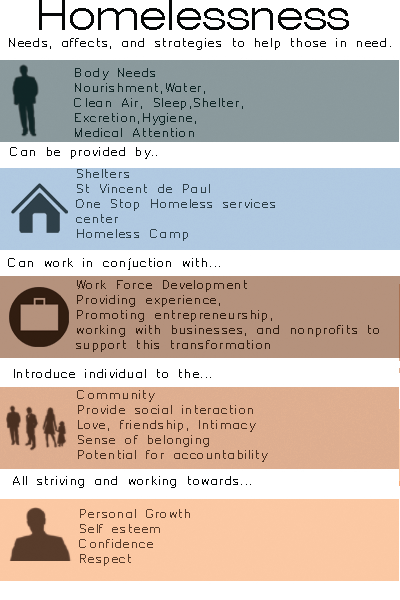
community input site program history funding logistics
The program for this project was developed through research in three specific areas: food systems, homelessness and housing. Student teams were tasked with assessing community needs, studying precedents and developing a viable program for each of these key components to the project.
.JPG)
On Friday we met with Michael Acaldo, and he gave us some information about St. Vincent de Paul and the homeless at large in Baton Rouge:
- St. Vincent de Paul is the largest homeless shelter in Baton Rouge, and they prepare 300-500 hot meals A DAY
- 1000-1300 people provided with shelter a year
- 700-1000 people use the shelter in one way or another a day
- In 2010, St.VdP served about 100,000 hot meals, in 2012 that number rose to about 236,000, and they're demand for food and resources is still accelerating
- about 70% of the people served at St.VdP are permanant residents in Baton Rouge, with the other 30% being people who are passing through, their care essentially extends beyond the Baton Rouge area
The shelter provides a plethora of
services to those in need, including shelter, legal services, a pharmacy, an
enormous kitchen, and even dental services. Many of the people that use the
St.Vincent de Paul shelter, and other shelters, are not permanently homeless.
The varying degrees of homelessness are a result of the many different paths
that can lead to homelessness. About 50% of those homeless that use St. VdP
have substance abuse problems, roughly 35% struggle with metal illness. Many
are homeless simply because they could not afford the cost of living. Men, in
general, are better at getting back on they're feet, as they don't have
dependent children, they usually graduate high school, and have some skill sets.
As a result of this, women usually spend a longer time homeless than men.


.JPG)
.png)
No comments:
Post a Comment
Please leave comments here...